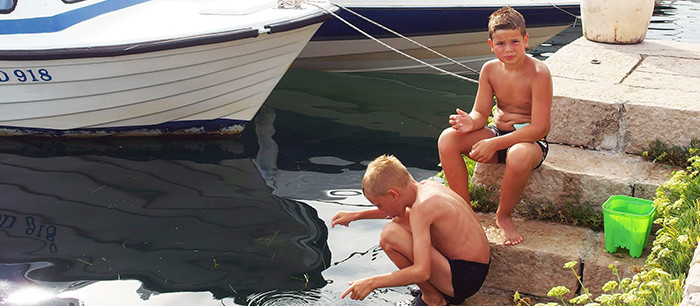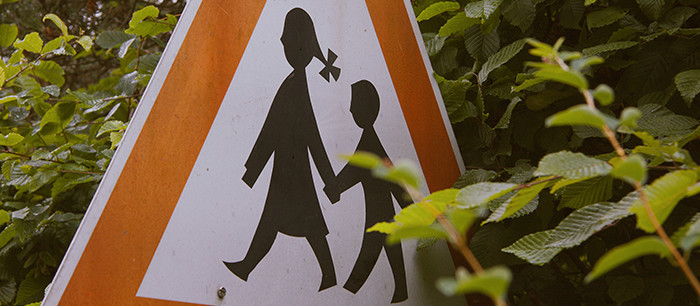Six-year-olds are at a fun age where they love to laugh, play, and soak up new information. Likely, your six-year-old is in school, though the lessons he or she learns shouldn’t be restricted to the classroom. As a parent, it’s a good idea to teach your child six lifesaving essentials that could keep him or her safe.
From escaping fires and water safety, to the dangers of cars and people, these six lessons run the gamut. Arm your six-year-old with the tools to stay safe in a variety of situations, and you’ll rest a little easier once your child has the safety knowledge that could make a real difference in an emergency.
Read on for six safety lessons your six-year-old should know.
1. How and why to call 911
Teaching your child about calling 911 goes beyond showing him or her how to dial the numbers 9-1-1.
What to teach your child about calling 911:
- How to call 911
- When to call 911
- How to tell the dispatcher what is happening
- What your address and phone number are to tell the dispatcher
Show your child how to operate the different phones in your home and those where he or she spends time. This includes landline phones, cell phones, pay phones, etc. Explain that a cell phone passcode isn’t needed to dial 911 in an emergency, and show how to plug in a landline phone if one is available but not routinely used.
Tell your child what an emergency is (someone falls down and is unresponsive, a house on fire) versus what an emergency isn’t (being hit by a sibling, or losing a toy).
Your child should seek out an adult if he or she sees an emergency in progress, and if none is available should dial 911. Role-play with your child so he or she becomes comfortable identifying an emergency situation and calling 911.
2. Fire escape plan
It’s important to have a fire escape plan in place in case a fire breaks out at home. Hold a fire drill with your whole family twice a year to keep the information fresh.
Plan for a fire by:
- Showing your child where fire extinguishers are kept in your home, and how to use them
- Teaching your child to feel door knobs for heat, and about how to stop, drop, and roll
- Telling children if a door knob is hot, not to open the door
- Showing your child how to exit your home in different ways, including climbing out windows if doors are blocked by flames
- Creating a meeting place outside your house (a safe spot in your yard, or at the home of a trusted neighbor)
3. Water safety

On average, two children ages 14 or younger die from unintentional drowning every day, according to the Centers for Disease Control and Prevention. Whether you have a pool in your backyard, or just enjoy hitting the local pool or beach in the warm months, teaching your child about water safety could save his or her life.
If there is a pool or body of water near your house, establish a rule that your child enters only when accompanied by an adult, and never before asking an adult if it’s okay to enter the water. The rule should apply each time your child wants to go into the water, even if it’s only to wade.
Sign your child up for swimming lessons taught by certified instructors. Also make sure your child wears a lifejacket during recreational water activities, such as boating, and never unbuckles it until safely on land.
Want to know more? Read 15 water safety rules every parent should follow.
4. Dangers around cars and traffic

Chances are, your child is around cars and traffic often, be it walking to school, playing in your neighborhood, or shopping with mom or dad. Teach your child about the dangers of cars and how to act around them.
Your six-year-old should learn:
- Never to cross the street without an adult
- Look left, right, then left again before stepping into the roadway
- Cross the street in a cross walk, once cars in both directions have stopped
- How to safely enter and exit a car parked curbside
- Always to wear a seat belt in the car
Children have a harder time than adults discerning how quickly a car is approaching. Teach your kids to never run across the road in front of cars, thinking they’ll have enough time to reach the other side.
5. When to say “no”
Teach your six-year-old that most people are good, but some are not. This goes for adults. Many children think they must do everything an adult says, however your child should learn that it’s okay to say “no” to a request (be it from an adult or another child) that makes him or her uncomfortable.
Teach your child what kinds of touching are okay, and which are not, and what to do if someone touches him or her in an inappropriate way.
6. Keep lines of communication open

Along with the previous lesson on saying no, teach your child never to keep a secret that makes them feel uncomfortable. Criminals and pedophiles are known to tell children to keep their activity a secret. Explain to your child the difference between “safe secrets” and “unsafe secrets.”
Encourage your child to feel comfortable sharing experiences, secrets, or any uncomfortable feelings with mom or dad. Let your kids know that you’ll never punish them or get mad at them for sharing a secret or uncomfortable situation. Assure them they can tell you anything, at any time.
No matter what time of year it is, brush up on more ways to keep your school-aged children safe with these five back to school safety tips.


